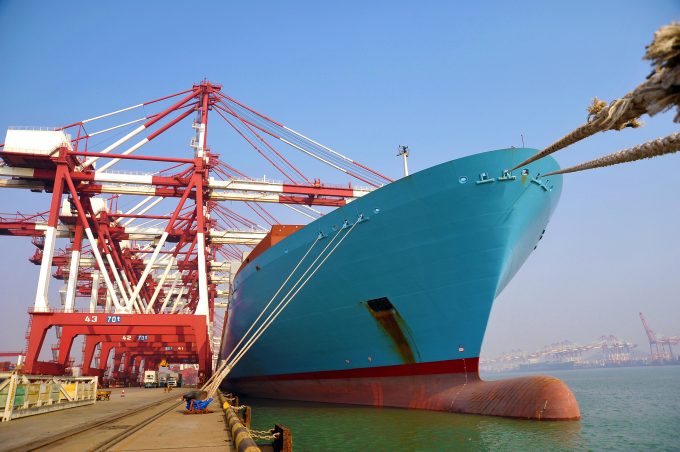Urgent call for breakdown of cargo onboard as General Average declared on Dali
Singapore-based Grace Ocean has officially declared General Average on its vessel, the Maersk-chartered and operated ...

To coincide with the delivery of the first of a series of eleven 20,568 teu second-generation Triple-E vessels, Maersk Line has clarified its fleet strategy.
The carrier said it needed the new capacity to achieve its growth target after its head-haul utilisation level hit an average 93% last year.
The Madrid Maersk, now the biggest (by capacity) containership afloat, commenced its maiden voyage from Tianjin, China, on 27 April on the 2M alliance Asia-North Europe service.
The Danish carrier said the ultra-large container vessel (ULCV) marked the start of its plan to “replace older, less efficient” ships.
Chief operating officer Soren Toft said: “Our strategy is to grow in line with our main competitors, and we do that through a combination of buying new and used ships and chartering vessels.
“These new vessels [a total of 27 newbuilds will join the fleet this year and next] help modernise our fleet, significantly improve our operational efficiency and will help us achieve our growth ambitions, regardless of short-term economic cycles.”
The $1.8bn ULCV order for 11 vessels, with an option for a further six, was signed in June 2015 with the South Korean DSME yard, although the vessels were originally specified as having a nominal capacity of 19,630 teu.
Maersk’s current orderbook includes nine 15,226 teu H-class vessels, which are 46m shorter than the original design of the Emma-class ships and, according to the carrier, will have “operational versatility” in that they are capable of serving smaller ports on north-south trades.
The delivery of a second order of eight H-class vessels,originally designed as 14,000 teu ships, has been pushed back by six months.
Making up Maersk’s orderbook are seven 3,596 teu ice-class Baltic feeder vessels, designed to meet the emission control regulations of the region along with the expected volume growth in the trade.
“Global growth may pick up this year or not, but these are factors we cannot control,” said Mr Toft. “What we can control is our position as the market and cost leader and we strengthen both of these with these new vessels,” he added.
Mr Toft said Maersk Line was expecting to grow by about 3% this year, but said that if this did not happen the carrier had “a powerful ability to adjust our network to changing conditions in a way that many other shipping lines do not have”.
In clarification, Maersk Line said it had a “relatively high number of vessels on short-term charters” which gave it the flexibility to off-hire these ships as and when the newbuilds were delivered.
It said it was also scrapping some owned “older and inefficient” vessels and advised that in the first three months of this year it had dispatched seven panamax vessels to the breakers.
According to the latest data from Alphaliner, 47% of Maersk Line’s 3.3m teu fleet is chartered in. This compares with MSC, which charters 64% of its 3m teu fleet, and CMA CGM, which has 62% of its 2.2m teu fleet on charter.
Comment on this article